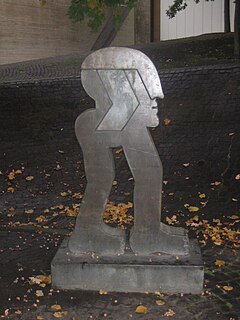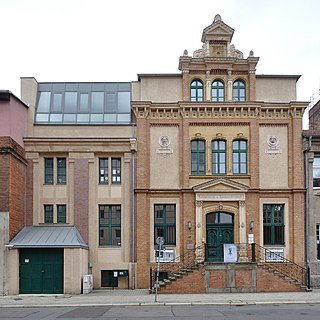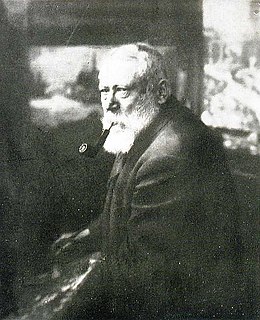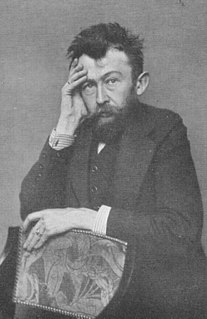
Raphie Etgar (born August 1947, Jerusalem) is an Israeli artist and curator who has served as artistic Director of Museum on the Seam since its establishment in 2000 and until 2021.

Raphie Etgar (born August 1947, Jerusalem) is an Israeli artist and curator who has served as artistic Director of Museum on the Seam since its establishment in 2000 and until 2021.
In 1972, Etgar graduated from the Bezalel Academy of Arts and Design in Jerusalem.
In 1980-1995 Etgar was a poster designer. He created over one thousand posters and prints for theater and cultural events in those years. Etgar was invited to lecture and direct projects in academies and art institutions such as Akademie der Künste, Berlin \ National College of Art and Design, Dublin \ Akademie der Bildenden Künste, Vienna \ Hochschule der Künste, Zurich \ Akademija Likovnih Umjetnosti, Sarajevo \ Kunstakademie, Düsseldorf \ Staatliche Akademie der Bildenden Künste, Stuttgart
In 1990-1999, Etgar was invited to serve as an Art Director and Artist in Residence to the S. FISHER publishing house in Germany. As part of his work he initiated a project that incorporates many leading authors and creates art works inspired by their books. Project "Bücher werden Plakate" involved Nobel Prize winning authors such as: Nadine Gordimer, J. M. Coetzee and Kenzaburō Ōe among others. His work with these renowned authors created a unique dialogue between the artistic and literary worlds that enriched the reading experience through the visual one. [1]
The exhibitions he curates deal with issues at the center of public discourse, human rights, civic responsibility and the commitment to bring moral and social change through contemporary art in local and universal contexts. One of the objectives of the museum is to create dialogue in face of disagreement. The museum was named by the New York Times as one of the 29 leading art venues around the globe. [2] In 2000 Etgar initiated the exhibition COEXISTENCE: [3] an international project that incorporates leading poster designers from around the globe. The project was displayed in over 35 cities and called for mutual understanding between fellow nations and religions. [4]
The Academy of Fine Arts, Munich is one of the oldest and most significant art academies in Germany. It is located in the Maxvorstadt district of Munich, in Bavaria, Germany.

Alfred Hrdlicka was an Austrian sculptor, painter, and professor. His surname is sometimes written Hrdlička.

Horst Antes is a German artist and sculptor.

Franz Kraus was an Israeli graphic designer.

Adolf Richard Hölzel was a German painter. He began as a Realist, but later became an early promoter of various Modern styles, including Abstractionism.
Anselm Reyle is an artist based in Berlin. He is known for his often large-scale abstract paintings and found-object sculptures.

Willi Baumeister was a German painter, scenic designer, art professor, and typographer. His work was part of the art competitions at the 1928 Summer Olympics and the 1932 Summer Olympics.

Edwin Scharff was a German sculptor. He was born in Neu-Ulm and died in Hamburg.

A Kunstgewerbeschule was a type of vocational arts school that existed in German-speaking countries from the mid-19th century. The term Werkkunstschule was also used for these schools. From the 1920s and after World War II, most of them either merged into universities or closed, although some continued until the 1970s.
Karin Sander is a German conceptual artist. She lives and works in Berlin and Zurich.

The Museum on the Seam is a socio-political contemporary art museum in Jerusalem, Israel.

The Coexist image is an image created by Polish, Warsaw-based graphic designer Piotr Młodożeniec [pl] in 2000 as an entry in an international art competition sponsored by the Museum on the Seam for Dialogue, Understanding and Coexistence. The original version was one of dozens of works displayed as large outdoor posters in Jerusalem in 2001. It is designed to represent tolerance between religions.

The State Academy of Fine Arts Stuttgart is a university in Stuttgart, Germany. Founded on 25 June 1761, and located since 1946 on the Weißenhof, the Academy, whose historical significance marks names such as Nicolas Guibal, Bernhard Pankok, Adolf Hölzel, Willi Baumeister, Herbert Hirche, K.R.H. Sonderborg, Alfred Hrdlicka, Marianne Eigenheer, Joseph Kosuth, Joan Jonas, Micha Ullman, offers from all art universities in the federal state Baden-Württemberg the largest numbers of courses, namely all disciplines of the visual field, and not just in an organizational network but also under one roof. This is essentially the result of the connection of the former Academy of Fine Arts with the former School of Applied Arts in 1941 as Staatliche Akademie der bildenden Künste Stuttgart, which was reconstituted by Theodor Heuss in 1946 under the same name and which aimed at a broad training program as well as an intensified development in the following decades. Under the rectorate of Wolfgang Kermer, on 22 February 1975, the ″Gesetz über die Kunsthochschulen im Lande Baden-Württemberg (Kunsthochschulgesetz)″ passed by the Landtag of Baden-Württemberg came into force, which for the first time in the history of the State Academy of Fine Arts Stuttgart regulated the status and the essential relationships and which guaranteed the equality of rank with universities.
Naama Arad is an Israeli sculptor and installation artist born in 1985. She lives and works in Tel Aviv. Arad has had solo exhibitions both at Tel Aviv Museum of Art as well as Sommer Contemporary Art gallery in Tel Aviv, Israel. Arad gained her bachelor's degree in visual art from the Bezalel Academy of Art and Design in Jerusalem (2010), and a Masters from the School of the art Institute of Chicago (2014).

Carl Rodeck was a German landscape, marine and portrait painter.
Ida Kerkovius (1879–1970) was a Baltic German painter and weaver from Latvia.

Petra Mattheis is a German Artist und Photographer. She became known for her artistic engagement with the topic menstruation.
Herzl paints Herzl is a series of exhibitions that ran from 1 October 2016 to 2018 in six locations across Europe and Israel. It was created by digital painter Israel Herzl, a fourth cousin of Theodor Herzl. He was joined by fellow Israeli artists Shai Yehezkeli, Yael Bar Tana, and Boaz Arad.
Wolfgang Kermer is a German art historian, artist, art educator, author, editor, curator of exhibitions and professor. From 1971 to 1984 he was repeatedly elected Rector of the State Academy of Fine Arts Stuttgart and thus the first scientific and at the same time youngest teacher in this position in the history of the university. Under his rectorate, the State Academy of Fine Arts Stuttgart was reformed in 1975 and 1978 on the base of two new university laws of the State of Baden-Württemberg and thus, for the first time in its history, authorized to set up diplomas for all courses. His focus is the history of Visual arts education, the art of Willi Baumeister and the history of the State Academy of Fine Arts Stuttgart and its predecessor institutions.

Paul Horst-Schulze was a German painter, graphic artist and artisan. His stage name Horst-Schulze came about by combining his middle name with his original family name.